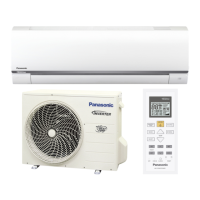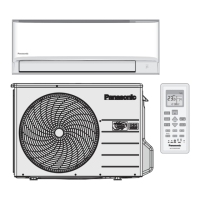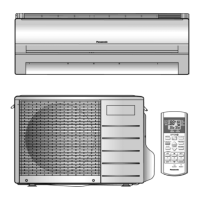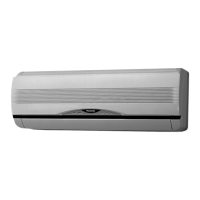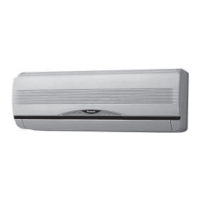61
14.4 Airflow Direction
There are two types of airflow, vertical airflow (directed by horizontal vane) and horizontal airflow (directed by
vertical vanes).
Control of airflow direction can be automatic (angles of direction is determined by operation mode, heat
exchanger temperature and intake air temperature) and manual (angles of direction can be adjusted using
remote control).
14.4.1 Vertical Airflow
Operation Mode Airflow Direction
Inner Vane Angle (°)
measured from reference point
Outer Vane Angle (°)
measured from reference point
1 2 3 4 5 1 2 3 4 5
Cooling
Auto
Control
Not yet achieve
setting temp.
5 ~ 45 0 ~ 40
Achieve setting
temp.
Fix at Step 1 (5) Fix at Step 1 (0)
Swing 5 ~ 45 0 ~ 40
Manual 5 21 30 38 45 0 17 25 33 40
Soft Dry
Auto
Control
Not yet achieve
setting temp.
5 ~ 45 0 ~ 40
Achieve setting
temp.
Fix at Step 1 (5) Fix at Step 1 (0)
Swing 5 ~ 45 0 ~ 40
Manual 5 21 30 38 45 0 17 25 33 40
Heating
Auto
A 21 17
B 52 47
C 21 17
Swing
Discharge air
temp. is cold
21 17
Discharge air
temp. is warm
41 ~ 61 36 ~ 56
Manual 21 31 41 52 61 17 26 36 47 56
1 Automatic vertical airflow direction can be set using remote control; the vane swings up and down within the
angles as stated above. For heating mode operation, the angle of the vane depends on the indoor heat
exchanger temperature as Figure 1 below. It does not swing during fan motor stop. When the air conditioner
is stopped using remote control, the vane will shift to close position.
2 Manual vertical airflow direction can be set using remote control; the angles of the vane are as stated above
and the positions of the vane are as Figure 2 below. When the air conditioner is stopped using remote control,
the vane will shift to close position.
58°C
50°C
30°
Indoor Heat
Exchanger Temperature
C
B
A
Figure 1
37°C

